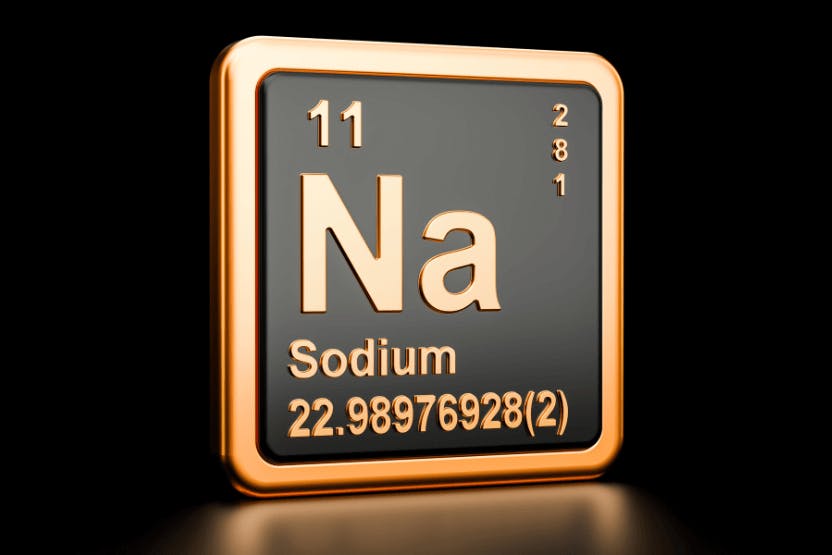
By Mel Lee-Smith
Published: 09/19/2023, edited: 10/13/2023
Reviewed by a licensed veterinary professional: Dr. Linda Simon, MVB MRCVS
Avoid expensive vet visits
Get peace of mind from the comfort of your home
Chat with a veterinary professional directly in the Wag! app
Return with more questions any time, any day
Overview
Even though it's an essential mineral, sodium has a bit of a bad reputation. Research shows high-sodium diets contribute to elevated blood pressure and heart disease in humans. Of course, too much of a good thing can be a bad thing, and most Americans are well aware of the risks of consuming too much sodium. But do the same risks apply to dogs?
How much sodium does your dog need to stay healthy? What does sodium do for dogs? Keep reading to find out!
Functions
Sodium is a macromineral, which means your dog needs to consume relatively large amounts compared to microminerals to stay healthy. Sodium is also an electrolyte. When sodium mixes with water, it creates charged ions that power many metabolic processes, like:
- maintaining proper fluid balance in the cells
- promoting nerve and muscle function
- regulating pH levels
Daily recommended intake
According to The Association of American Feed Control Officials (AAFCO) standards, the dry matter of dog food for healthy adults should contain at least 0.3% sodium. What does "dry matter" mean? The dry matter basis of a dog food describes its nutritional content without including the moisture content of the food. Most commercial dry dog foods contain 11% moisture on average, while wet foods contain up to 78% moisture.
The European Pet Food Industry Federation (EPFIF) recommends an upper limit of 3.75 grams of sodium per 1,000 calories.
Because sodium is water-soluble, excess amounts of sodium typically pass through the urine. Dogs diagnosed with heart, liver, or kidney disease may require less sodium. Pet parents of dogs with heart failure should reduce their dogs' sodium intake to 0.08% to 0.25%, according to their vet's instructions.
A study published in Veterinary Medicine and Science found some dog food manufacturers added more sodium than recommended by the EPFIF. However, the study noted a lack of evidence on the potential risks and benefits of high-sodium diets for dogs.
Food sources
Did you know your dog's kibble may contain table salt? Not only does this ensure adequate sodium levels, but it also makes it tastier for your pup! Other sources of sodium include:
- Red meat
- Chicken
- Eggs
- Seafood
- Salt
Signs of sodium deficiency in dogs
Most commercial kibbles contain all the sodium your dog needs to stay healthy, which means deficiency is rare.
However, certain conditions and injuries can cause sodium deficiency in dogs, also called hyponatremia. The most common cause of hyponatremia is an increase in total body water, not a loss of sodium. Some dogs with hyponatremia may have normal or even increased sodium levels.
In dogs with certain types of hyponatremia, the concentration of sodium in the blood becomes diluted due to excess water retention. Hyponatremia is often secondary to a more serious condition, infection, or injury. It can also be a side effect of certain medications, including chemotherapy drugs and tricyclic antidepressants. Hyponatremia may indicate an inability for fluids to pass through cell membranes.
Onset symptoms of hyponatremia are typically mild but will appear alongside other, potentially more severe signs of the primary cause. Symptoms of sodium deficiency in dogs include:
- Loss of appetite
- Vomiting
- Seizures
- Tremors
- Lethargy
- Coma
- Loss of muscular strength
Treatment of sodium deficiency
Treatment for hyponatremia varies depending on the cause of the condition and severity of symptoms. First, the vet will work to stabilize the dog and manage symptoms of the underlying disease. They may also administer sodium containing fluids intravenously.
Signs of sodium overdose in dogs
Sodium overdose rarely occurs in dogs consuming a healthy diet with 24/7 access to fresh drinking water. Drinking seawater and eating non-food items like homemade playdough may cause salt poisoning in dogs.
In practice, we see seawater poisoning in dogs who have been playing fetch in the water, meaning the drink sea water each time they go to get the ball.
The first sign of sodium overdose is usually vomiting. Symptoms will progress without treatment. Contact your vet immediately if you notice any of the following signs of sodium overdose in dogs:
- Increased thirst
- Diarrhea
- Lethargy
- Weakness
- Loss of coordination
- Seizures
- Tremors
Treatment of sodium overdose
Treatment will vary depending on the cause and symptoms. IV fluid therapy and electrolyte management are typically the first line of defense. Restoring proper sodium levels must be done slowly and carefully — a sudden change in sodium levels can cause brain swelling.
A related condition is excess sodium in the blood, which is usually secondary to another disease or caused by a lack of access to fresh drinking water.
Sodium supplements for dogs
Since sodium is relatively abundant in food, oral sodium supplements aren't widely available at pet stores and online retailers. Healthy dogs on a balanced diet typically won't benefit from sodium supplements.
Got questions about sodium for dogs? Live chat with a vet now to discuss your dog's nutritional needs!
You may also like
